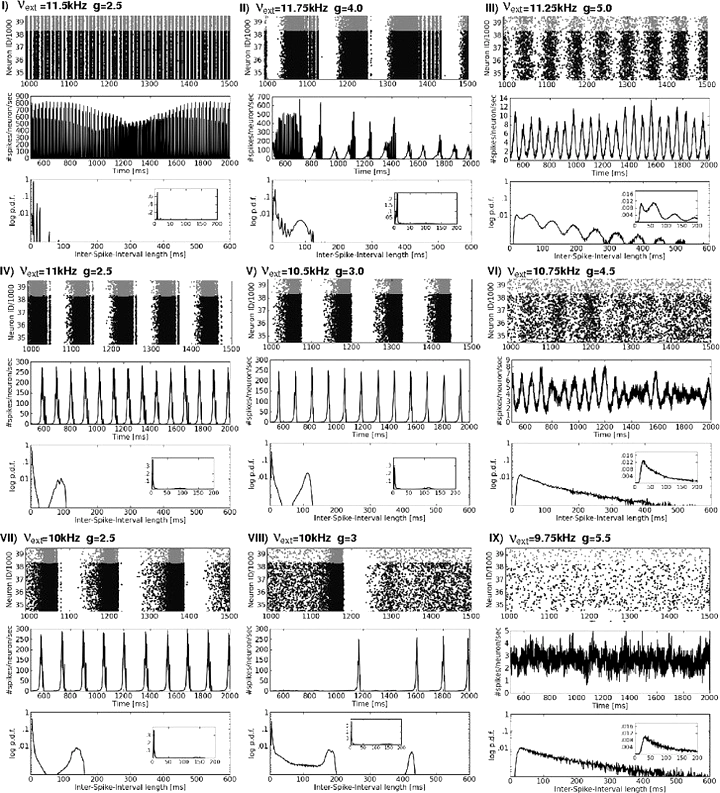Phase space analysis of networks based on biologically realistic parameters

Abstract
We study cortical network dynamics for a more realistic network model. It represents, in terms of spatial scale, a large piece of cortex allowing for long-range connections, resulting in a rather sparse connectivity. We use two different types of conductance-based I&F neurons as excitatory and inhibitory units, as well as specific connection probabilities. In order to remain computationally tractable, we reduce neuron density, modelling part of the missing internal input via external poissonian spike trains. Compared to previous studies, we observe significant changes in the dynamical phase space: Altered activity patterns require another regularity measure than the coefficient of variation. We identify two types of mixed states, where different phases coexist in certain regions of the phase space. More notably, our boundary between high and low activity states depends predominantly on the relation between excitatory and inhibitory synaptic strength instead of the input rate. Key words:Artificial neural networks, Data analysis, Simulation, Spiking neurons. This work is supported by EC IP project FP6-015879 (FACETS).
- Based on(2010). Phase space analysis of networks based on biologically realistic parameters. Journal of Physiology-Paris.
- see follow-up :(2012). Complex dynamics in recurrent cortical networks based on spatially realistic connectivities. Frontiers in Computational Neuroscience.